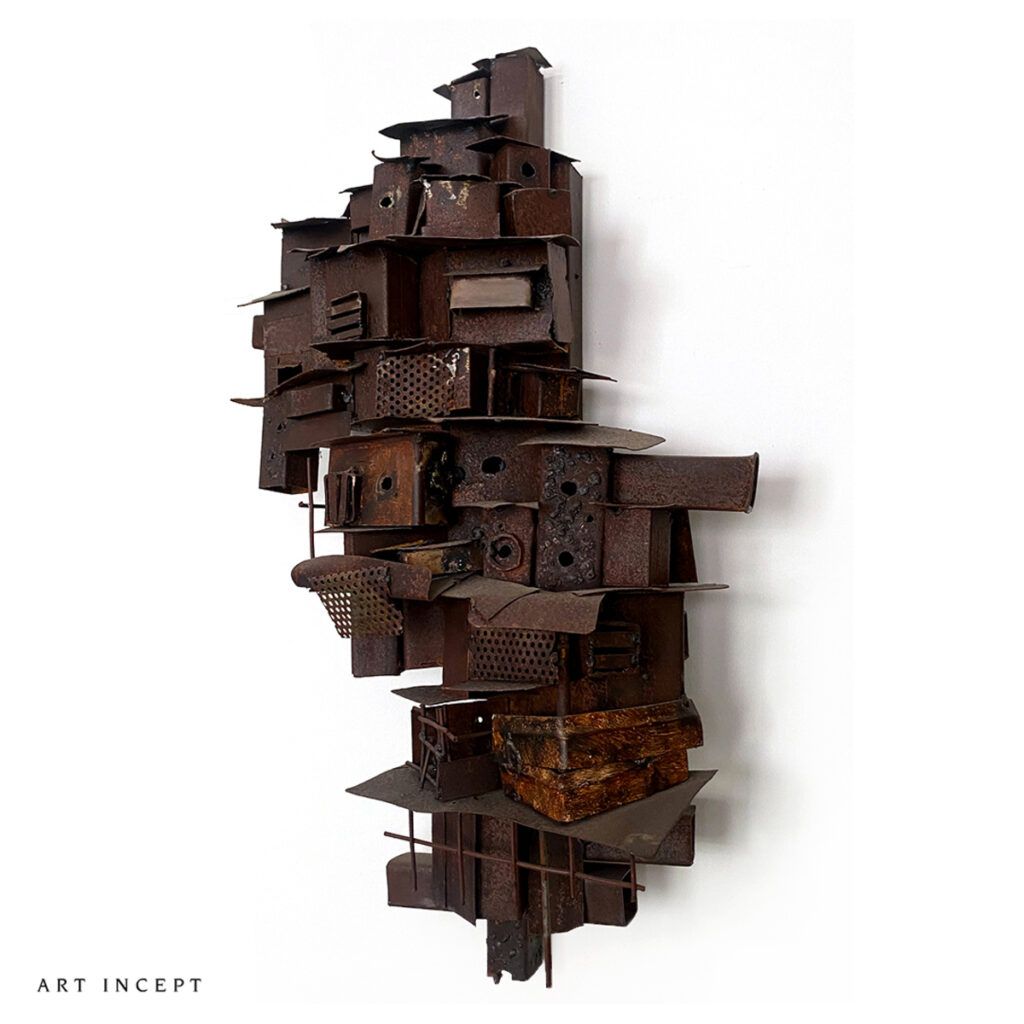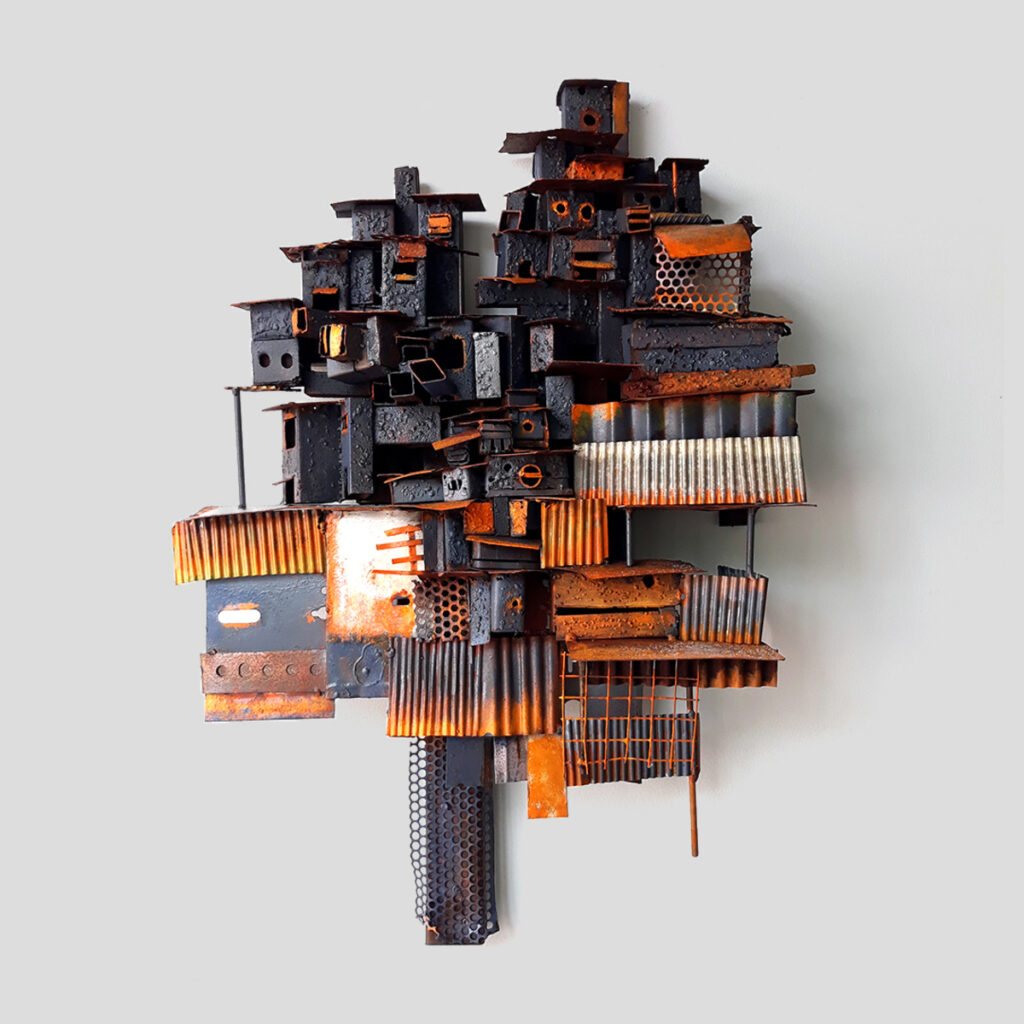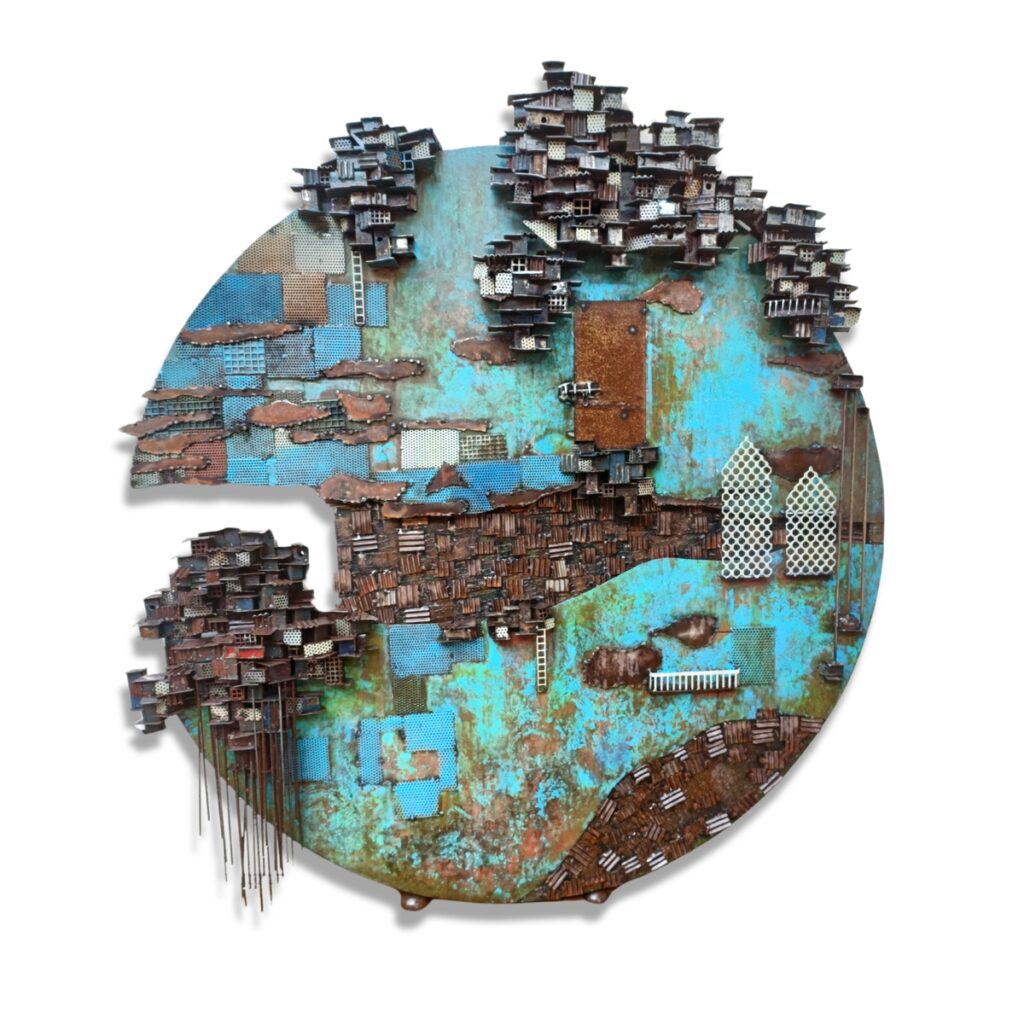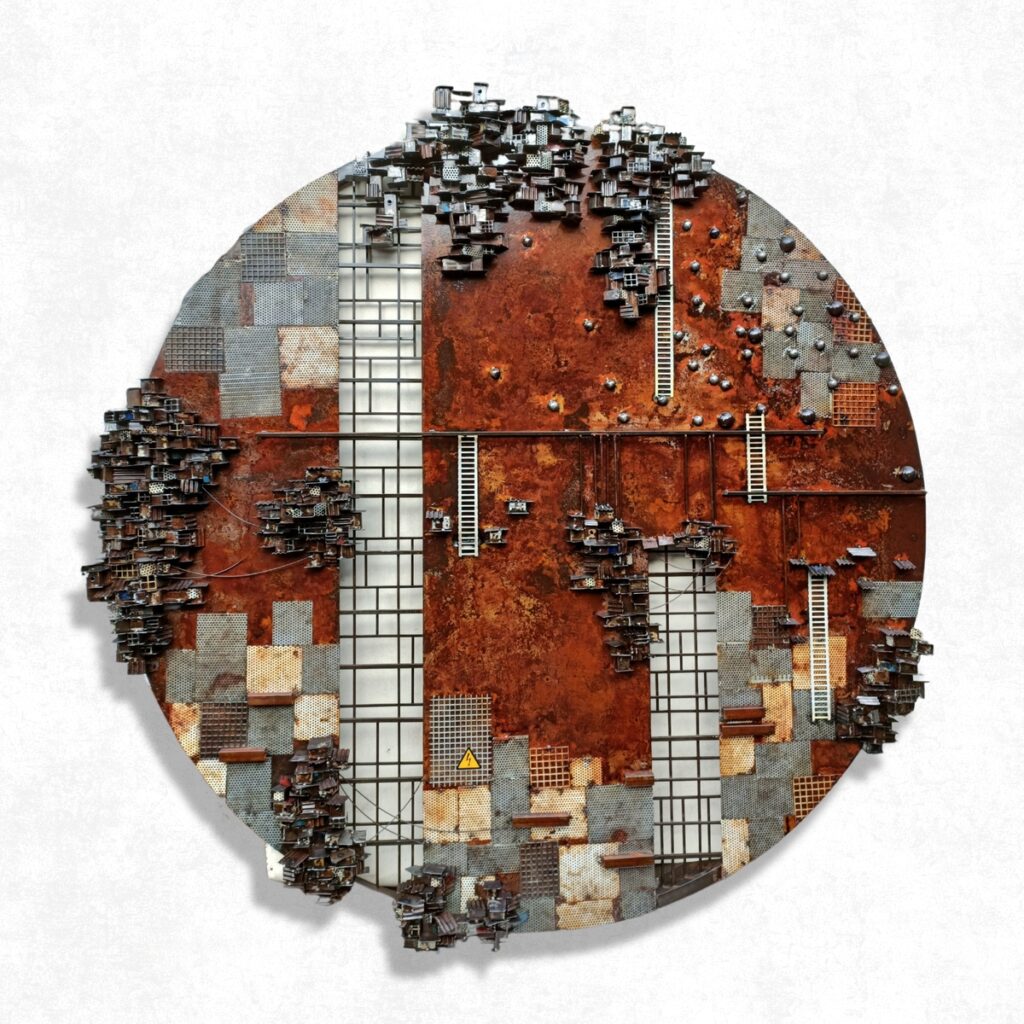Unearthing Abhishek Dodiya’s Sculptural Ideas
Written by Juhi Mathur
Visual narratives are always tied to a bigger cause, rooted in societal and cultural subtext, and each artist functions as an observer and a storyteller, weaving a rich tapestry of distinct voices and opinions. Abhishek’s sculptural installations have conceptualised this distinctive feeling of human experiences and existence, whilst providing a subtle narrative on the condition of human existence in the urban world.
Abhishek’s journey in art began with his familial connections and experiences, growing up he saw his uncle, who was an artist himself, paint and create portraits and paintings. His childhood lessons shaped his relationship with art and painting in varied ways. Whilst painting and fine arts were already a huge part of his training, his experience with his father in his workshop led him to familiarise himself with metalwork and welding which was used to make metal beds. His main job was to clean the rust from the metal rods. In 15 years, he learnt more about the nuances of painting and at the age of 27, enrolled in the faculty of fine arts to learn about painting more holistically.

With the introduction of pedagogical tools for learning art and its history, Abhishek’s practice became more methodical and inquisitive in format, where the idea took precedence. The experimentation with sculpture added more dimension to his visual vocabulary expanding it outside the confines of two – dimensional artworks and facilitating a connection with the aspects of scrap-metal art. The history of the scrap-metal art movement can be traced back to the genesis of post-modern ideologies in visual culture when the post-war world was questioning the meaning of art and the idea of beauty and the post-structuralists were questioning the binary ideas of art and morality. Also known as Junk Art, the movement became a significant juncture in art’s historical context with the oeuvre of Robert Rauschenberg who would manipulate and transplant scrap metrical in his works; henceforth questioning its identity and the meaning of art itself. Some of the other notable junk artists are Kurt Schwitters, Vladimir Tatlin, and Pablo Picasso. Abhishek began using found materials, specifically the scrap metal that was found in the junkyards of Bhavnagar, his hometown. Welding these found objects together, mimicking the architectural structures, symbolizing homes and dwellings functioning as an area of critique for the constant displacement of populations due to expanding urban plans and globalisation.

This profound shift in the materiality in Abhishek’s practice began with the onset of the pandemic which brought him back to his hometown and his practice with welding and scrap metal helped him mould his ideas of family and home in a more tangible format. Hailing from a family of blacksmiths, Abhishek’s familiarity with the welding industry and furniture making in Bhavnagar gave him access to scrap metal that was essential for his practice, and it added layer to his artwork as a lot of the materials come from ship-breaking yards, hence they add to the discourse on the ecological cognizance of art practitioners. In his work, ‘The Colony’, the city of Bhavnagar became the central idea, and the urbanisation in the area transformed the landscape topographically as well as demographically, touching upon the ideas of expansions of cities and the mindset of the unhindered and unplanned rise of residential and commercial structures. In his artwork, Abhishek used different materials like iron meshes, cubical pipes, and broken sheets of asbestos to signify the slim dwellings of his hometown, producing an aerial view of the town. Furthermore, by adding a layer of rust to the surface to symbolize the sand of the area, he infused the panels with the hues of rusted iron that mimic the geographical lustre and culture of the soil as the metals seep in it. His interest in mapping the living conditions in urban landscapes is realised in the sculpture – Dharavi. A highly detailed spherical installation exploring the demographic developments in one of the biggest slums in India, as the junk metal gradually transforms into the tin roofs that are part of the architecture in Dharavi, owing to its tenacity and durability. While touching upon the topics of increasing population and depleting resources, Abhishek had explored the themes of migration and settlement that have created a separate world for people who are shifting to bigger cities in search of opportunities, whilst leading to establishment of unplanned spaces. Through the layering of houses on top of each other, Abhishek has delineated the suffocation that is both literal and metaphorical, touching upon the concepts of desire and ambition that define the loneliness of human craving in the lands that might be foreign to its inhabitants.

Citing contemporary artists like Subodh Gupta and L N Tallur as his inspiration, he points out their journeys as an influential point in his process. Subodh Gupta’s oeuvre has evolved into installation works that inspired Abhishek to bring dimensionality to his work and expression, drawing ideas from the interdisciplinary nature of artistic thought and visual narratives. Delving further into his journey of breaking down materials and building them up, the work ‘Cyclone’ documented the destruction that was caused by a cyclone in coastal Gujarat. Exploring the broken houses and remnants after the disaster, deconstructing the themes of the fatalist future of mankind, the series studied connection with changing climate at a global level touching upon the current environmental crisis and its direct impact on people’s homes.
In its entirety, Abhishek’s visual vocabulary is a personal memoir of his childhood and familial connections as his gravitation towards scrap metal harkens back to his history with welding and furniture-making, taking him back to the lands of Bhavnagar. The process of scraping and cleaning the metal helped him to learn the process of rusting the metal which has provided him with a vivid palette of oranges and browns, that reminds us of rustic lands and stories that beckon us to experience the entropic economic and social developments of the Indian middle class. His practice draws from real life while following a more surreal approach to create sculptures that represent ephemeral human desire, and this is succinctly portrayed in his recent series of works, titled Rusty Climb. In this series, the focus is on the intangible and inconspicuous facet of yearning that has permeated the human psyche, redefining the relationship between a society and its dwelling. Abhishek has presented this exhausting cycle of hope and unfulfilled dreams, deconstructing the human condition, and symbolising it through gaps and incomplete circles in the artwork.

Presenting complex themes of class, social movement and material culture through a lens of sculpture and design, Abhishek has infused his ideas with a sense of thoughtfulness and gravity. The themes of home and belonging move beyond the mere personal expression, into the realm of inquiry and discourse on the dire economic and living conditions in the modern world, as the cities carry two worlds within them, that are divided by more than just concrete structures and geographical locations – focusing on the socio-political and economic factors that have cemented the fates of modern homes and communities.
About the artist:
Abhishek Dodiya, born in 1984 in Gujarat, is a sculptor known for exploring the connection between objects and human psychology. His work invites viewers to engage with surface textures, prompting reflections on personal experiences.
Dodiya’s visuals reveal subtle yearnings in urban landscapes, exploring the relationship between people, their lives and their cramped city homes. His sculptural installations focus on the endless cycle of human desire and its impact on life. Unfulfilled dreams are symbolized by incomplete circles and gaps in his art. These pieces delve into the effects of urban life on the human psyche, exploring themes of desire, existence, cities, and their inhabitants.
The works chart the philosophical and psychological effects of urban land on the human psyche, constantly questioning and exploring the themes of desire, existence, cities, and the people who inhabit them.
